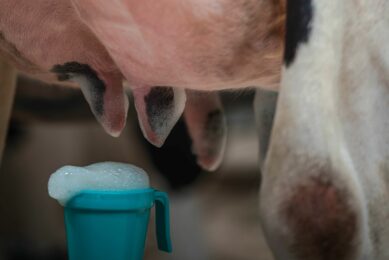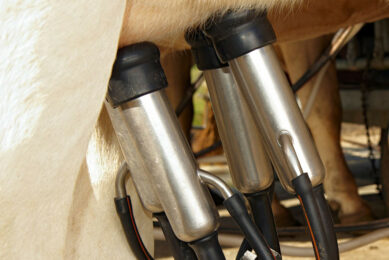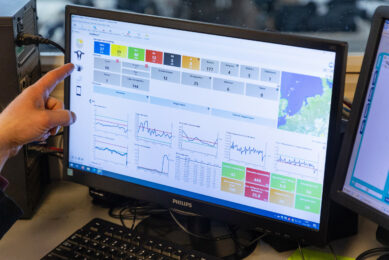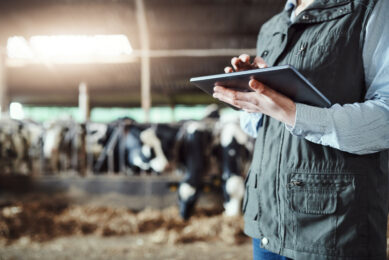Diving into digital dairy farming and automation
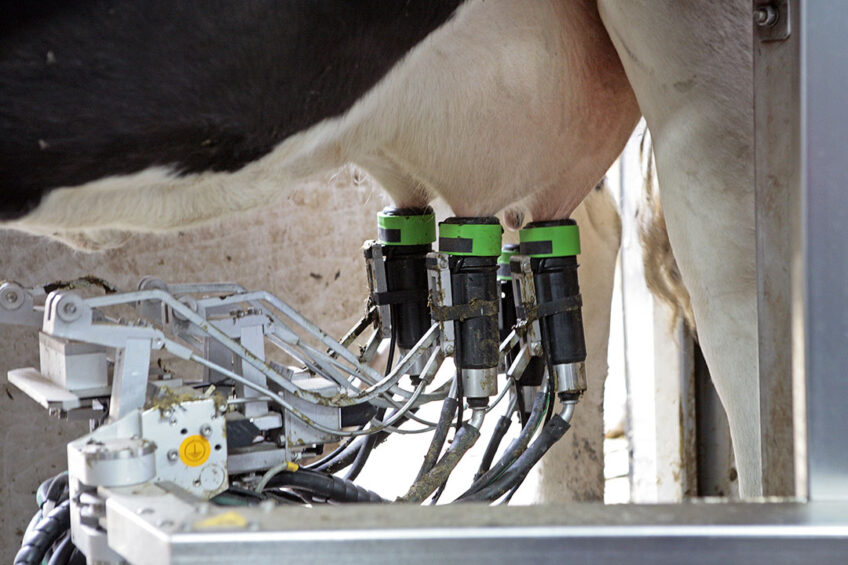
Improved technological solutions are required to meet the enhanced demand for milk products. Digital dairy farming offers a great opportunity to meet the increasing demand for milk products more efficiently with less manpower with automatic milking.
As world population grows, the demand for milk products proportionally increases. Therefore, the dairy industry is experiencing a constant increase in dairy herd sizes and a concurrent declining stockperson per animal ratio.
Additionally, cow milking, including barn sanitation, teat treatment, mastitis prediction and udder condition examination and milk quality testing are complex and time-consuming. As a result, the available time to monitor and manage individual animals properly will decrease, jeopardising animal health and welfare.
To face these challenges, improved technological solutions are required to meet the enhanced demand for milk products. Digital dairy farming using Internet of Things, artificial intelligence and data-driven techniques offer a great opportunity to meet the increasing demand for milk products more efficiently with less manpower with the automatic milking process.
Advantages of automatic milking
Manual milking on a dairy farm is labour-intensive and time-consuming. Additionally, the manual preserving process of milk can cause bacterial infection in milk. On modern dairy farms, automatic milking process significantly improves labour efficiency (20%-50%) by milking parlour equipment such as automatic cluster removal, and rapid entry and exit gates. Farmers are freed from the milking process and the associated rigid schedule, and labour can be devoted to the supervision of animals, feeding and other activities. Moreover, the automatic milking process is consistent for every cow and every visit. The vacuum level is regulated based on milk flow from each quarter resulting in less threat of udder injury. Increase in milking frequency enhances milk yield which may result in less stress on the udder and increased cow comfort.
Improvements in animal health and welfare are also considered likely outcomes of more widespread adoption of automatic milking systems by the dairy industry. Cows milked by automatic milking systems have more freedom and more opportunities to interact with their environment. Furthermore, evidence suggests that automatic milking system reduces physiological stress and discomfort compared with non-automated milking to a certain extent, and the system also monitors and detects cattle health and behaviour.
Application of Internet of Things
Internet of Things is described as the ability of connected devices through high-speed internet to sense, collect, share, and process data to utilise this data to fulfil common goals. In the dairy industry, finding the correct time for milking dairy cattle is a challenging task. Moreover, a lack of technology can cause the milk to be perishable and fragile. Using wearable sensors and Internet of Things, farmers will be aware of the milk production status of every cow and can detect diseases such as mastitis or any other disease that can reduce milk production.
Application of artificial intelligence
Artificial intelligence is defined as human intelligence stimulation in machines which displays characteristics associated with the human mind such as learning and problem-solving. Artificial intelligence focuses on understanding and designing systems demonstrating intelligence traits such as the ability to learn, to derive knowledge from data, to rationalise and to take actions to achieve specific goals.
In the dairy industry, artificial intelligence allows farmers to analyse the data collected by sensors and other hardware technologies. Big data combined with artificial intelligence algorithms can be transformed into useful information to improve decision-making on dairy farms. The implementation of artificial intelligence benefits high technological systems, such as automatic milking process and increases a dairy farm’s competitiveness in the future.
On-farm application
Most dairy farms are located in remote areas where internet connectivity might not be strong enough to facilitate fast data transmission and to stream big data sets to the cloud for analysis. In addition, there might be sources of interference on farms, which also have negative impacts on the connection to the cloud. Moreover, the cost of data transmission is responsible for the slow uptake of digital technologies in the dairy industry.
Currently, farmers rely on a sparsely distributed network of sensors to gather data on farms. In addition to the physical constraints of these sensors, they are expensive and can cost up to US$8,000. Furthermore, there is a tendency to perceive Internet of Things and artificial intelligence as tools only applicable to the digital world due to a lack of understanding of their practical application.
Future development
Automatic milking using Internet of Things and artificial intelligence represents a major technological innovation in the dairy industry. Further studies are required to determine the best time of day and milking frequency for each dairy cattle breed in different lactation and reproductive cycles. Additionally, future research should focus on improving the real-time monitoring of milk quality and to evaluate how many automatic milking stations would optimally serve particular herd sizes and breeds. Such modeling to optimise cow traffic provides the most efficient service, reduces the incidence of lameness, decreases costs, and enhances benefits in the future.
Conclusion
Technological advancements using Internet of Things and artificial intelligence allow for new levels of dairy cattle milk production management. Further research needs to be done to overcome the challenges for implementing Internet of Things and artificial intelligence and to make it possible for farmers to take advantage of digital dairy farming technologies to run a more efficient and profitable enterprise.
Co-author: Hossein Taheri, assistant professor, Department of Manufacturing Engineering, Georgia Southern University



